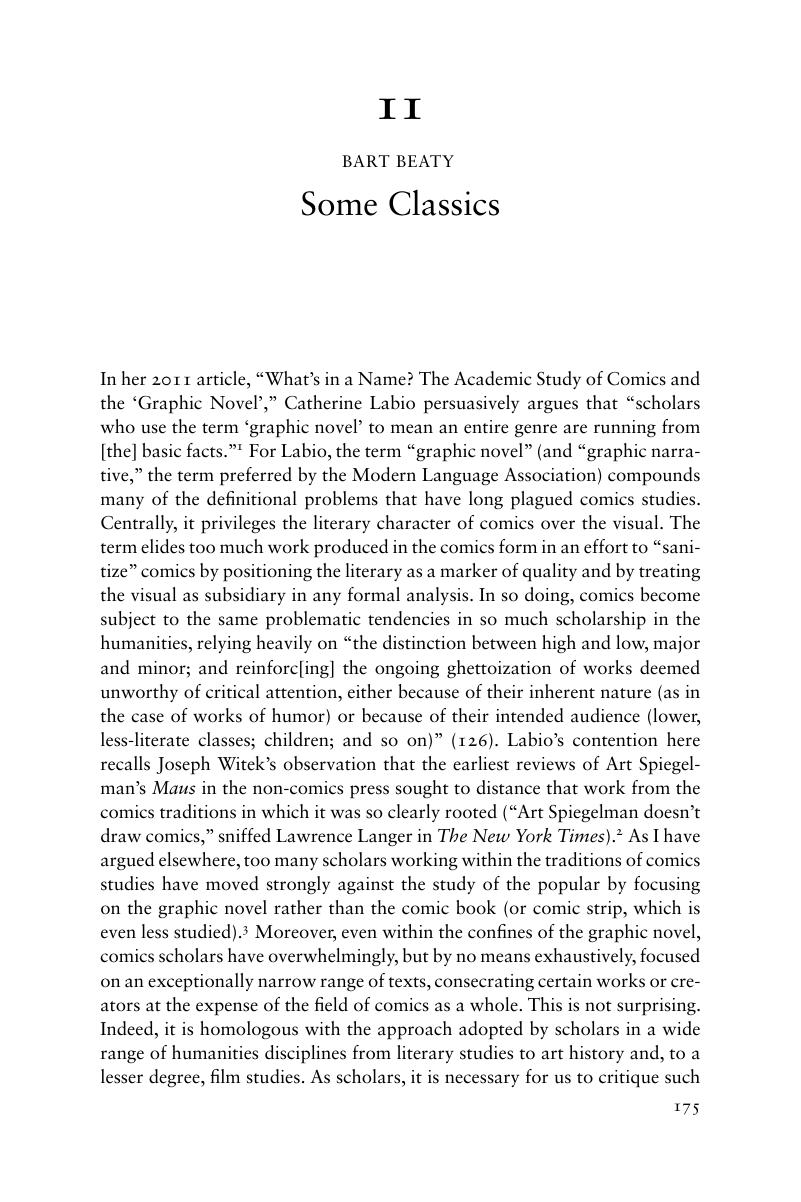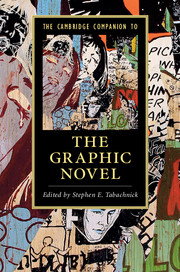Book contents
- The Cambridge Companion to the Graphic Novel
- The Cambridge Companion to the Graphic Novel
- Copyright page
- Contents
- Figures
- Contributors
- Chronology
- Introduction
- 1 How the Graphic Novel Works
- 2 From Comics to the Graphic Novel
- 3 The Development of the American Graphic Novel
- 4 The International Graphic Novel
- 5 Historical Fiction
- 6 Revisionist Superheroes, Fantasy, and Science Fiction
- 7 The Autobiographical and Biographical Graphic Novel
- 8 Other Non-Fiction
- 9 Novel to Graphic Novel
- 10 Graphic Novel into Film
- 11 Some Classics
- 12 Learning from the Graphic Novel
- Further Reading
- Index
- Cambridge Companions to…
- References
11 - Some Classics
Published online by Cambridge University Press: 03 June 2017
- The Cambridge Companion to the Graphic Novel
- The Cambridge Companion to the Graphic Novel
- Copyright page
- Contents
- Figures
- Contributors
- Chronology
- Introduction
- 1 How the Graphic Novel Works
- 2 From Comics to the Graphic Novel
- 3 The Development of the American Graphic Novel
- 4 The International Graphic Novel
- 5 Historical Fiction
- 6 Revisionist Superheroes, Fantasy, and Science Fiction
- 7 The Autobiographical and Biographical Graphic Novel
- 8 Other Non-Fiction
- 9 Novel to Graphic Novel
- 10 Graphic Novel into Film
- 11 Some Classics
- 12 Learning from the Graphic Novel
- Further Reading
- Index
- Cambridge Companions to…
- References
Summary

- Type
- Chapter
- Information
- The Cambridge Companion to the Graphic Novel , pp. 175 - 191Publisher: Cambridge University PressPrint publication year: 2017
References
Works Cited
- 2
- Cited by



